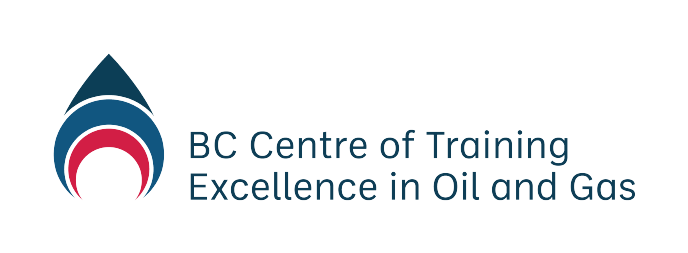-
Module 2.0 How to be Successful in this Course
-
Module 2.1 Introduction to Natural Gas
-
Module 2.2 The Natural Gas Industry in British Columbia
- Overview
- Learning Outcomes
- Natural Gas Science – The Simple Version
- Natural Gas Science – Chemistry
- Natural Gas Science – Physics
- Natural Gas Science – Units of Measurement
- Natural Gas Science – Geology
- Natural Gas Resources and Uses
- Oversight of the Natural Gas Industry
- Understanding Land Rights and Natural Gas
- Energy and the Future
-
Module 2.3 Upstream – Well Site Selection, Preparation and Drilling, Completion, Production, Water Recycling, and Reclamation
- Learning Outcomes
- The Upstream Sector – Extraction and Processing
- The Upstream Sector – Exploration and Site Selection
- The Upstream Sector – Preparation and Drilling
- The Upstream Sector – Completion
- The Upstream Sector – Production
- The Upstream Sector – Water Recycling
- The Upstream Sector – Reclamation
- Upstream Companies and Jobs in British Columbia – Companies
- Upstream Companies and Jobs in British Columbia – Industry Associations
- Upstream Companies and Jobs in British Columbia – Professional Associations
- New Vocabulary
-
Module 2.4 Midstream – Transportation, Processing, Refining
- Learning Outcomes
- The Midstream Sector
- The Midstream Sector – Processing Natural Gas
- The Midstream Sector – Liquefied Natural Gas
- The Midstream Sector – An Emerging Industry
- The Midstream Sector – Processing LNG
- The Midstream Sector – Proposed LNG Projects in British Columbia
- Transportation
- Midstream Companies and Jobs in British Columbia
-
Module 2.5 Downstream – Refining and Markets
-
Module 2.6 Health and Wellness in the Natural Gas Industry
-
Module 2.7 Safety
-
Module 2.8 Terminology and Communication
-
Module 2.9 Jobs and Careers
- Learning Outcomes
- Industry Outlook
- Technology is Changing Workforce and Skills
- Employment in the Natural Gas Industry
- Employment in the Natural Gas Industry – Types of Employment
- Employment in the Natural Gas Industry – Range of Jobs
- Employment in the Natural Gas Industry – High Demand Jobs and Occupations
- Occupational Education and Training
-
Module 3.0 How to be a Valued Employee
-
Module 3.1 Identifying Interests and Skills
-
Module 3.2 Looking for Employment in Natural Gas
-
Module 3.3 Applying for Employment in Natural Gas
The following five videos provide an overview of the history of the oil and gas industry in the United States which is connected to industry history in Canada. The history of the production of oil is closely connected to the history of natural gas.
Video 1: History of Oil Part 1 (9 minutes 53 seconds)
Video 2: History of Oil Part 2 (9 minutes 53 seconds)
Video 3: History of Oil Part 3(9 minutes 53 seconds)
Video 4: History of Oil Part 4 (9 minutes 58 seconds)
Video 5: History of Oil Part 5\(2 minutes, 51 seconds)
Learning Activity 1: Understanding the history of the oil and gas industry
1. Watch Video 1 and answer the following questions.
a) Who is Abraham Gesner?
b) What is sperm oil?
c) What is kerosene?
d) What is brine?
e) Who is Edward Drake?
Learning Activity 2: See how history impacts development of industry
Instructions
1. Watch videos 1 through 5, then answer the following questions. Note, for video 4 just watch up to the 5-minute mark.
a) Why do we study history in general, and why do we study the oil and gas history in particular?
b) What can we learn about the industry now, from learning about the industry then?
c) Give an example of what “one door closes another one opens” means in the oil industry.
d) When was Standard Oil Trust dismantled; what are the spin-off companies?
e) What can we understand about the oil and gas industry based on the people that are represented in the video? Who were the average people that were working? Where did they live?
Learning Activity 3: Mind Map Important Events in Oil and Gas History
A Mind Map is a visual presentation of your understanding about what you have learned so far. For tips on how to create a mind map see Figure 1 and Figure 2.
Instructions
- Work in small groups and create a mind map highlighting the important events in the recent history (post 1950) of oil and gas. Being as creative as you can, using words, symbols, graphics, etc.
- Share your group’s work with the class.
Figure 1: How to Construct a Mind Map
Start with a blank piece of paper (larger is better), flip chart or whiteboard
- Write the key idea or central theme in centre of the page, flip chart or whiteboard
- Next, write down 1 to 3 key words for each topic. Place these around the central idea
- Leave room between key secondary topic words to make it easier to read
- Use thick lines to connect the central idea to each secondary topic
- For each secondary topic, write down any subtopics around each secondary topic
- Use thinner lines to connect the subtopics to the secondary topic
- Where appropriate, add additional concepts and ideas (details) to the subtopics
Draw Quickly
- This is a brainstorming activity
- deas should be expressed quickly
- Use words or simple drawings, icons, doodles, images, symbols to express the concepts, ideas, issues, etc. that you are trying to convey
Look for relationships to show connections between ideas, use:
- Groupings
- Branches
- Colours
Use capitals, colours & line thickness to:
- Focus attention on key words or important themes.
- Show main ideas and subtopics.
- Highlight e.g.
- Thicker lines closer to the centre.
- Thinner lines further out, for subtopics, details, etc.
Figure 2: Mind Map Example

